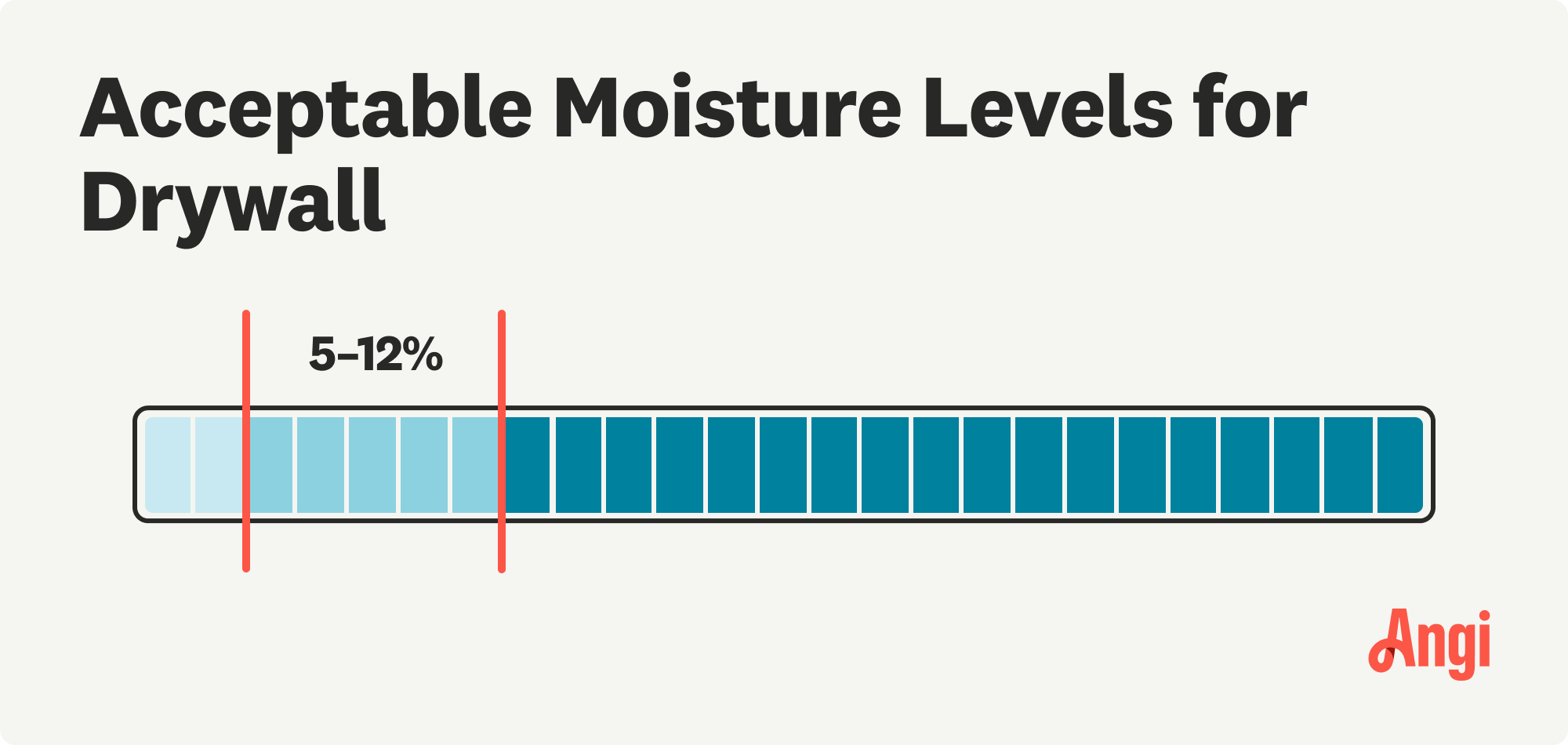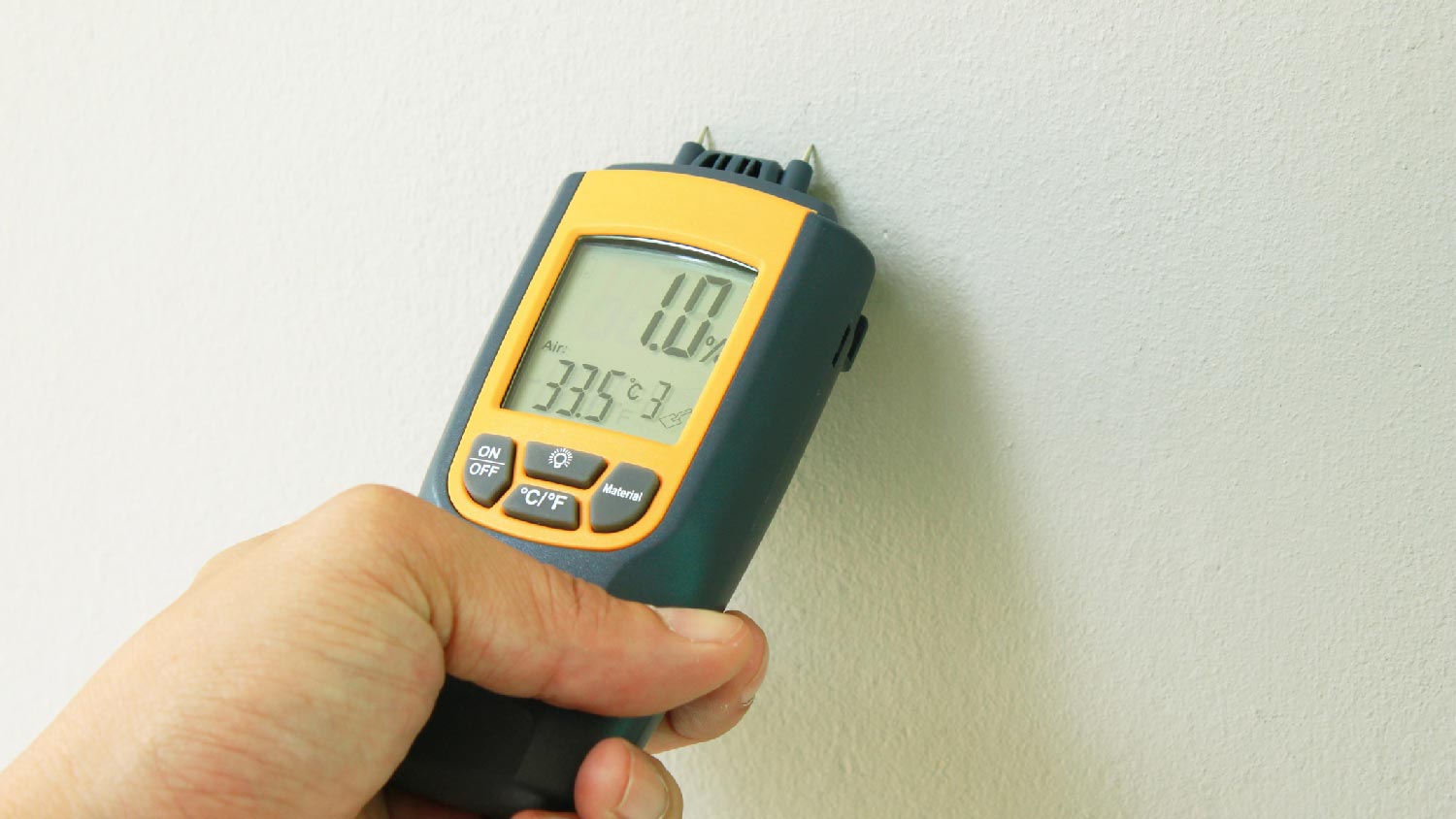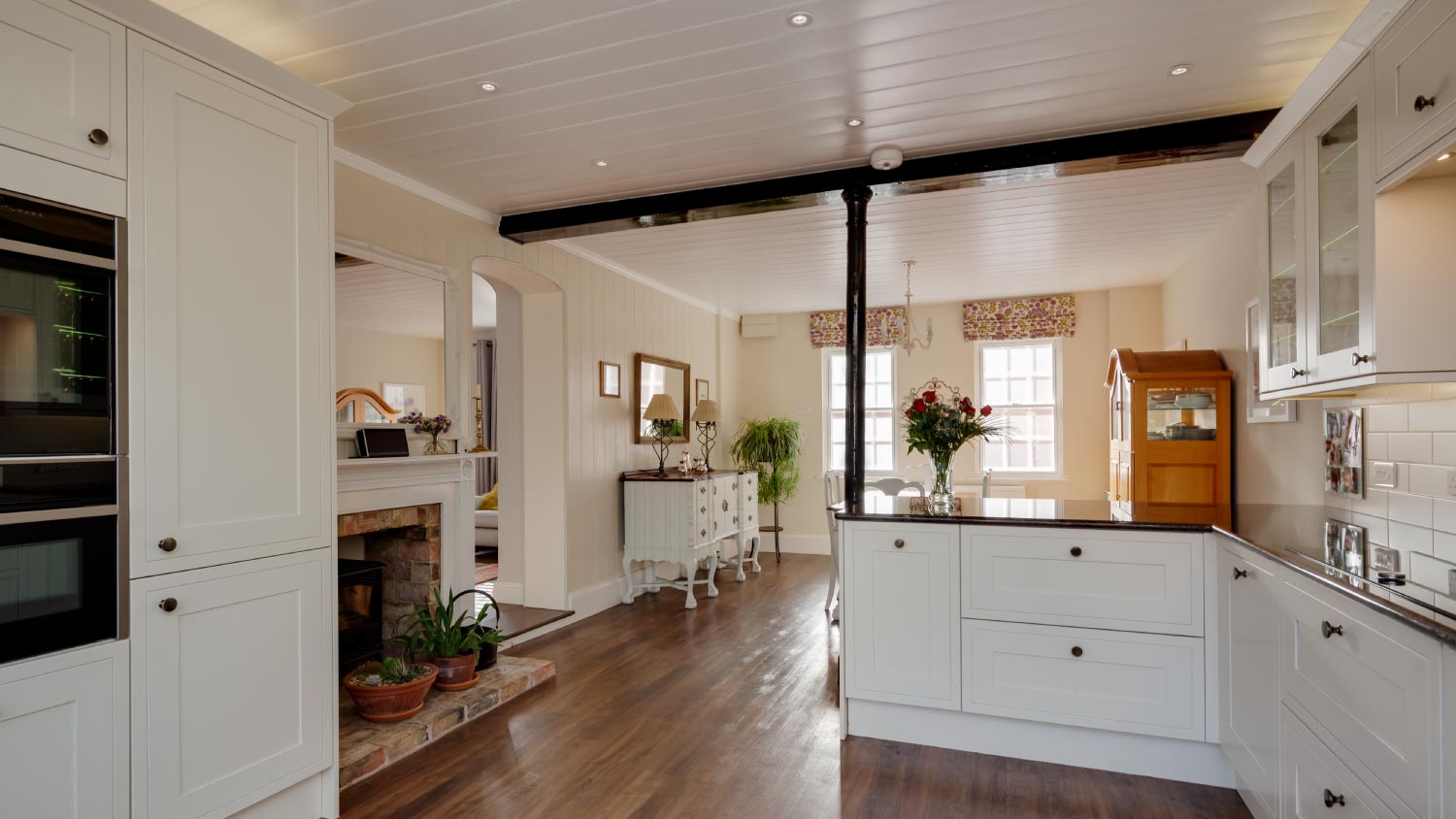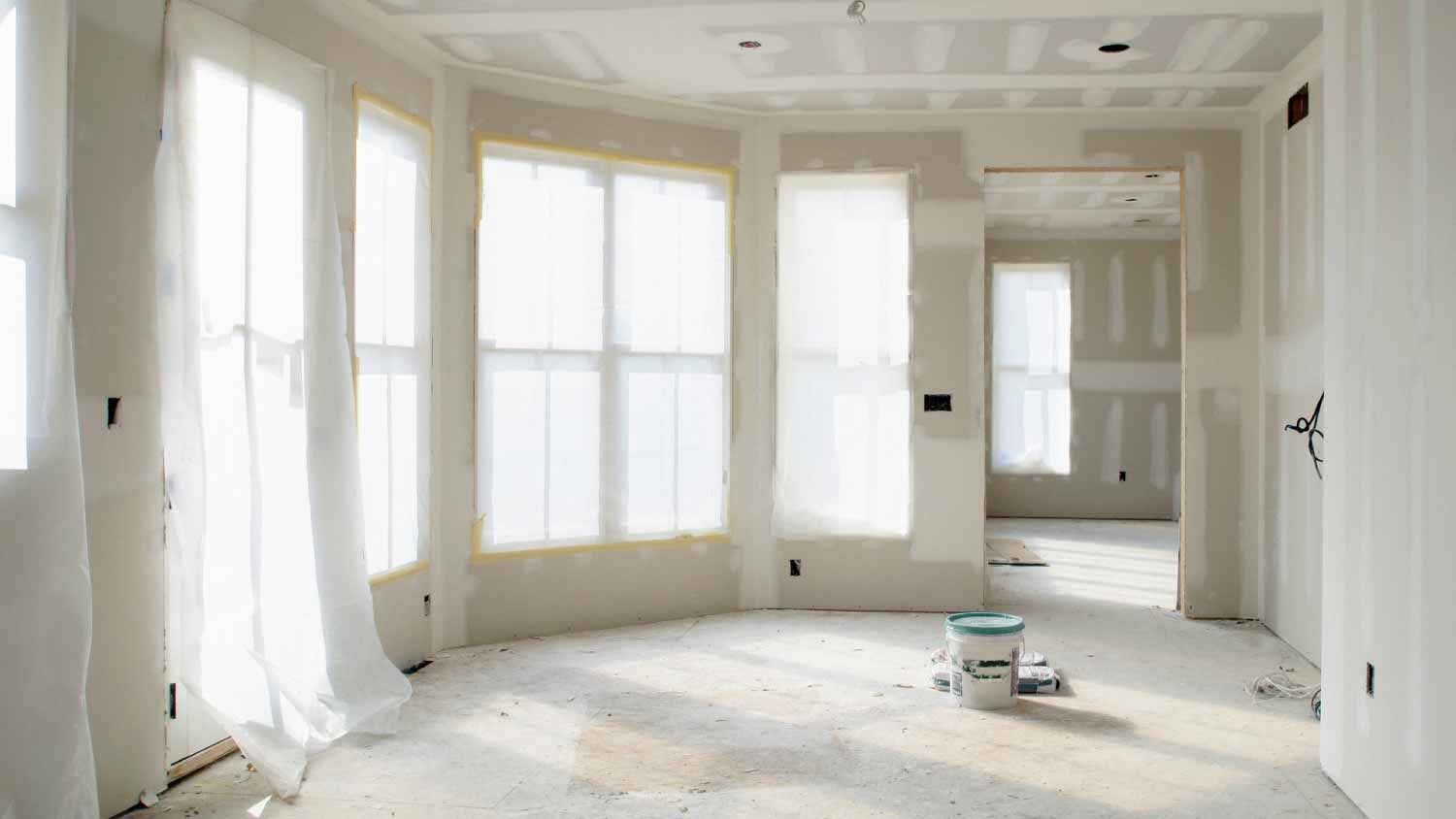
Installing drywall is the most common way to finish your home’s interior. Use this drywall installation cost guide to see what your project is likely to cost.
Drywall really lives up to its name


Drywall can maintain a 5% to 12% moisture level, and you can measure this with a moisture meter.
Replace drywall with a moisture level reading over 17%.
Water damage can lead to mold growth, rot, and lost R-value in drywall.
Consider a vapor barrier or moisture-resistant drywall to minimize moisture risks.
With a name like drywall, it makes sense to worry whether drywall is ruined if it gets wet. Maybe you’ve encountered a little leak under the kitchen sink that got the drywall wet, and you’re hoping to avoid a whole reno. Or perhaps your bathroom ventilation isn’t great, and the high humidity levels are leading to bubbling or sagging in the walls. So, can drywall get wet? Here’s what you should know about how moisture affects drywall.
Drywall is more durable than it may seem, and despite the name, a small bit of water shouldn’t be a problem for drywall. However, when drywall gets wet, it can compromise the R-value (how well drywall helps insulate your house). If your drywall has experienced more than a minor leak and is showing signs of water damage, you’ll need to remove the affected drywall sheets.

Drywall can withstand 5% to 12% moisture. Within this level, the drywall can still hold weight, and the moisture shouldn’t cause flaking, peeling, or bubbling paint. However, if the moisture level is more than 17%, you need to call a pro to replace the drywall sheet.
Although primer and paint help protect drywall, and joint compound seals any cracks between sheets of drywall, there are still several instances where drywall can accidentally get wet.
High humidity: If you have standard drywall in a room with high moisture levels, like a bathroom or kitchen, the humidity can eventually damage the drywall. Consider plastic behind moisture-resistant drywall for more protection in humid rooms.
Leaky plumbing: Even a small leak can cause water to soak into the drywall, which is porous and will hold onto the moisture. This can lead to rot or mold growth.
Poor ventilation: Especially in rooms that get steamy, ventilation is essential for redirecting excess water vapor outdoors rather than letting it condense on the drywall.
Improper installation: It’s important that drywall is installed correctly to avoid water damage. For instance, if you decide to drywall over tile, you risk moisture building up between the tile and the new drywall.
Flooding: Standing water that sits for several hours or even days can make drywall weak and prone to mold growth. You’ll need to call a pro to replace your drywall after flooding.
New construction: Maybe your new bathroom addition is under construction, but then a storm blows through and gets the drywall wet. If something like this happens, consult the builders for next steps.
There are a few different ways to inspect drywall to determine whether it’s wet or ruined from the amount of moisture present.
Look at the area you suspect is wet. For bare or painted drywall, you may notice discoloration, peeling, or bubbling spots, which could be a sign of water damage from the drywall getting wet.

You can use a pin moisture meter, which will penetrate the drywall and detect whether it’s wet or not, or a pinless moisture meter that relies on electromagnetic waves to determine if there’s water in the drywall. Both options display the moisture level as a percentage. Replace any drywall with a moisture level over 17%.
First, make sure to wear goggles, work gloves, and an N95 or P100 mask before checking for wet drywall because there could be mold spores present. Once you’ve suited up, use a small tool, like a screwdriver, to tap into the drywall. If it feels soft or spongy, the drywall is wet and will likely need a replacement.
If the area around the drywall begins to smell musty, like an old bath towel or a damp basement, it could be a sign that the drywall is too wet. It could also mean that mold has already started growing in the area.
If all signs point to damp or compromised drywall, your next course of action is to hire a drywall repair pro near you. They can fix the wet section of drywall before the water damage spreads to more areas throughout your house.
A pro will need to cut out at least 2 to 4 feet of the affected wall and remove the drywall and any insulation, which could also be wet if the drywall is holding moisture. For smaller leaks without extensive damage, a pro can use a mesh patch for drywall to repair and strengthen the area. Because of the potential for mold, you should always leave wet drywall repairs to a pro.
From average costs to expert advice, get all the answers you need to get your job done.

Installing drywall is the most common way to finish your home’s interior. Use this drywall installation cost guide to see what your project is likely to cost.

Whether you’re trying to keep noise in or out, soundproofing materials are the way to go. Use this guide to see how much it costs to soundproof a room.

Installing beadboard ceilings is a great DIY project. Learn what to expect cost-wise from this project, whether removing or covering a popcorn ceiling.

If you’re wondering who to call for drywall repairs, look no further. This drywall repair contractor hiring guide will help you choose a contractor.

What is joint compound? In short, it’s a specific type of filler made of gypsum dust—but of course, there’s much more to know. We’ve got you covered.

With a drywall repair kit, you can fix small holes in an hour or so. Ready to get started? Here’s how to patch a hole in drywall in 10 easy steps.